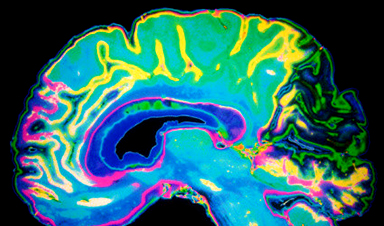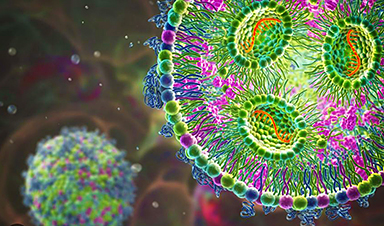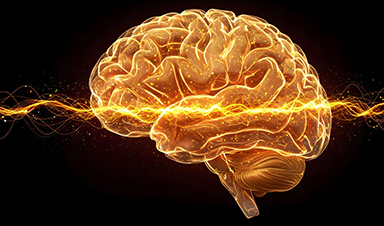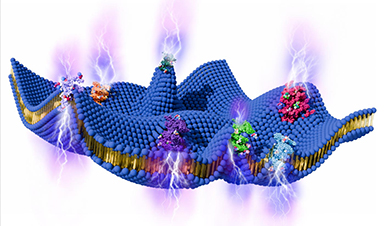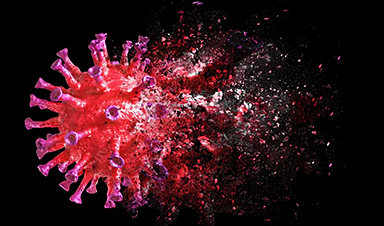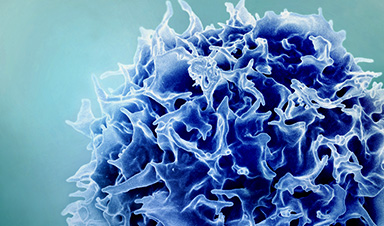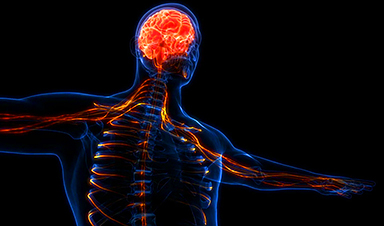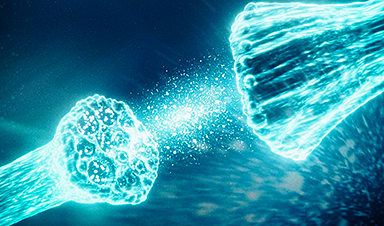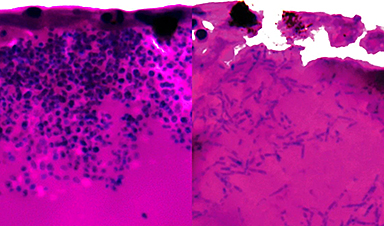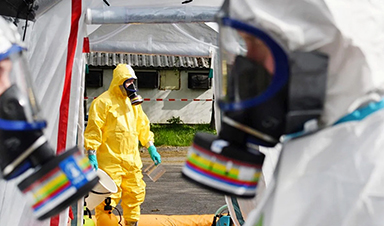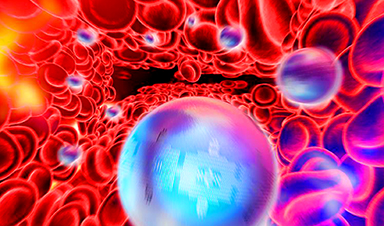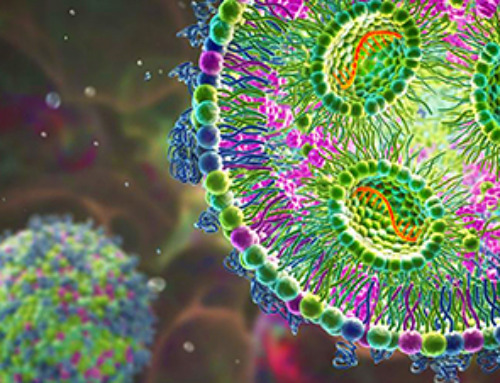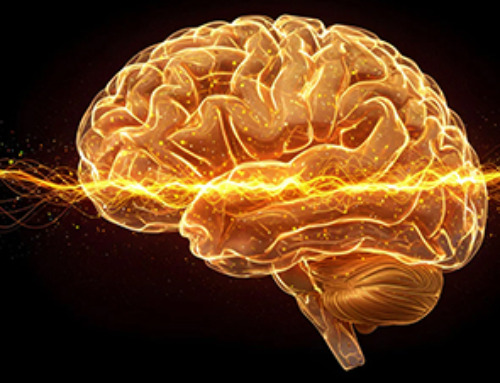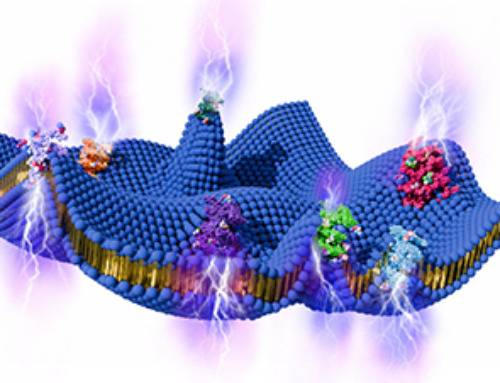In a study that reshapes what we know about COVID-19 and its most perplexing symptoms, scientists have discovered that the blood coagulation protein fibrin causes the unusual clotting and inflammation that have become hallmarks of the disease, while also suppressing the body’s ability to clear the virus.
Importantly, the team also identified a new antibody therapy to combat all of these deleterious effects.
Published in Nature, the study by Gladstone Institutes and collaborators overturns the prevailing theory that blood clotting is merely a consequence of inflammation in COVID-19. Through experiments in the lab and with mice, the researchers show that blood clotting is instead a primary effect, driving other problems-; including toxic inflammation, impaired viral clearance, and neurological symptoms prevalent in those with COVID-19 and long COVID.
The trigger is fibrin, a protein in the blood that normally enables healthy blood coagulation, but has previously been shown to have toxic inflammatory effects. In the new study, scientists found that fibrin becomes even more toxic in COVID-19 as it binds to both the virus and immune cells, creating unusual clots that lead to inflammation, fibrosis, and loss of neurons.
Knowing that fibrin is the instigator of inflammation and neurological symptoms, we can build a new path forward for treating the disease at the root. In our experiments in mice, neutralizing blood toxicity with fibrin antibody therapy can protect the brain and body after COVID infection.”
Katerina Akassoglou, PhD, Senior Investigator and Director, Center for Neurovascular Brain Immunology, Gladstone Institutes
From the earliest months of the pandemic, irregular blood clotting and stroke emerged as puzzling effects of COVID-19, even among patients who were otherwise asymptomatic. Later, as long COVID became a major public health issue, the stakes grew even higher to understand the cause of this disease’s other symptoms, including its neurological effects. More than 400 million people worldwide have had COVID since the start of the pandemic, with an estimated economic cost of about $1 trillion each year.
Flipping the conversation
Many scientists and medical professionals have hypothesized that inflammation from the immune system’s rapid reaction to the COVID-causing virus is what leads to blood clotting and stroke. But even at the dawn of the pandemic in 2020, that explanation didn’t sound right to Akassoglou and her scientific collaborators.
“We know of many other viruses that unleash a similar cytokine storm in response to infection, but without causing blood clotting activity as we see with COVID,” says Warner Greene, MD, PhD, senior investigator and director emeritus at Gladstone, who co-led the study with Akassoglou.
“We began to wonder if blood clots played a principal role in COVID-; if this virus evolved in a way to hijack clotting for its own benefit,” Akassoglou adds.
Indeed, through multiple experiments in mice, the researchers found that the virus spike protein directly binds to fibrin, causing structurally abnormal blood clots with enhanced inflammatory activity. The team leveraged genetic tools to create a specific mutation that blocks only the inflammatory properties of fibrin without affecting the protein’s beneficial blood-clotting abilities.
When mice were genetically altered to carry the mutant fibrin or had no fibrin in their bloodstream, the scientists found that inflammation, oxidative stress, fibrosis, and clotting in the lungs didn’t occur or were much reduced after COVID-19 infection.
In addition to discovering that fibrin sets off inflammation, the team made another important discovery: fibrin also suppresses the body’s “natural killer,” or NK, cells, which normally work to clear the virus from the body. Remarkably, when the scientists depleted fibrin in the mice, NK cells were able to clear the virus.
These findings support that fibrin is necessary for the virus to harm the body.
Mechanism not triggered by vaccines
The fibrin mechanism described in the paper is not related to the extremely rare thrombotic complication with low platelets that has been linked to adenoviral DNA COVID-19 vaccines, which are no longer available in the U.S.
By contrast, in a study of 99 million COVID-vaccinated individuals led by The Global COVID Vaccine Safety Project, vaccines that leverage mRNA technology to produce spike proteins in the body exhibited no excessive clotting or blood-based disorders that met the threshold for safety concerns. Instead, mRNA vaccines protect from clotting complications otherwise induced by infection.
Protecting the brain
Akassoglou’s lab has long investigated how fibrin that leaks into the brain triggers neurologic diseases, such as Alzheimer’s disease and multiple sclerosis, essentially by hijacking the brain’s immune system and setting off a cascade of harmful, often irreversible, effects.
The team now showed that in COVID-infected mice, fibrin is responsible for the harmful activation of microglia, the brain’s immune cells involved in neurodegeneration. After infection, the scientists found fibrin together with toxic microglia and when they inhibited fibrin, the activation of these toxic cells in the brains of mice was significantly reduced.
“Fibrin that leaks into the brain may be the culprit for COVID-19 and long COVID patients with neurologic symptoms, including brain fog and difficulty concentrating,” Akassoglou says. “Inhibiting fibrin protects neurons from harmful inflammation after COVID-19 infection.”
The team tested its approach on different strains of the virus that causes COVID-19, including those that can infect the brain and those that do not. Neutralizing fibrin was beneficial in both types of infection, pointing to the harmful role of fibrin in brain and body in COVID-19 and highlighting the broad implications of this study.
A new potential therapy
This study demonstrates that fibrin is damaging in at least two ways: by activating a chronic form of inflammation and by suppressing a beneficial NK cell response capable of clearing virally infected cells.
“We realized if we could neutralize both of these negative effects, we could potentially resolve the severe symptoms we’re seeing in patients with COVID-19 and possibly long COVID,” Greene says.
Akassoglou’s lab previously developed a drug, a therapeutic monoclonal antibody, that acts only on fibrin’s inflammatory properties without adverse effects on blood coagulation and protects mice from multiple sclerosis and Alzheimer’s disease.
In the new study, the team showed that the antibody blocked the interaction of fibrin with immune cells and the virus. By administering the immunotherapy to infected mice, the team was able to prevent and treat severe inflammation, reduce fibrosis and viral proteins in the lungs, and improve survival rates. In the brain, the fibrin antibody therapy reduced harmful inflammation and increased survival of neurons in mice after infection.
A humanized version of Akassoglou’s first-in-class fibrin-targeting immunotherapy is already in Phase 1 safety and tolerability clinical trials in healthy people by Therini Bio. The drug cannot be used on patients until it completes this Phase 1 safety evaluation, and then would need to be tested in more advanced trials for COVID-19 and long COVID.
Looking ahead to such trials, Akassoglou says patients could be selected based on levels of fibrin products in their blood-;a measure believed to be a predictive biomarker of cognitive impairment in long COVID.
“The fibrin immunotherapy can be tested as part of a multipronged approach, along with prevention and vaccination, to reduce adverse health outcomes from long COVID,” Greene adds.
The power of team science
The study’s findings intersect the scientific areas of immunology, hematology, virology, neuroscience, and drug discovery-;and required many labs across institutions to work together to execute experiments required to solve the blood-clotting mystery. Akassoglou founded the Center for Neurovascular Brain Immunology at Gladstone and UCSF in 2021 specifically for the purpose of conducting multidisciplinary, collaborative studies that address complex problems.
“I don’t think any single lab could have accomplished this on their own,” says Melanie Ott, MD, PhD, director of the Gladstone Institute of Virology and co-author of the study, noting important contributions from teams at Stanford, UC San Francisco, UC San Diego, and UCLA. “This tour-de-force study highlights the importance of collaboration in tackling these big questions.”
Not only did this study address a big question, but it did so in a way that paves a clear clinical path for helping patients who have few options today, says Lennart Mucke, MD, director of the Gladstone Institute of Neurological Disease.
“Neurological symptoms of COVID-19 and long COVID can touch every part of a person’s life, affecting cognitive function, memory, and even emotional health,” Mucke says. “This study presents a novel strategy for treating these devastating effects and addressing the long-term disease burden of the SARS-CoV-2 virus.”
Ryu, J. K., et al. (2024) Fibrin drives thromboinflammation and neuropathology in COVID-19. Nature. doi.org/10.1038/s41586-024-07873-4
News
Nanomedicine in 2026: Experts Predict the Year Ahead
Progress in nanomedicine is almost as fast as the science is small. Over the last year, we've seen an abundance of headlines covering medical R&D at the nanoscale: polymer-coated nanoparticles targeting ovarian cancer, Albumin recruiting nanoparticles for [...]
Lipid nanoparticles could unlock access for millions of autoimmune patients
Capstan Therapeutics scientists demonstrate that lipid nanoparticles can engineer CAR T cells within the body without laboratory cell manufacturing and ex vivo expansion. The method using targeted lipid nanoparticles (tLNPs) is designed to deliver [...]
The Brain’s Strange Way of Computing Could Explain Consciousness
Consciousness may emerge not from code, but from the way living brains physically compute. Discussions about consciousness often stall between two deeply rooted viewpoints. One is computational functionalism, which holds that cognition can be [...]
First breathing ‘lung-on-chip’ developed using genetically identical cells
Researchers at the Francis Crick Institute and AlveoliX have developed the first human lung-on-chip model using stem cells taken from only one person. These chips simulate breathing motions and lung disease in an individual, [...]
Cell Membranes May Act Like Tiny Power Generators
Living cells may generate electricity through the natural motion of their membranes. These fast electrical signals could play a role in how cells communicate and sense their surroundings. Scientists have proposed a new theoretical [...]
This Viral RNA Structure Could Lead to a Universal Antiviral Drug
Researchers identify a shared RNA-protein interaction that could lead to broad-spectrum antiviral treatments for enteroviruses. A new study from the University of Maryland, Baltimore County (UMBC), published in Nature Communications, explains how enteroviruses begin reproducing [...]
New study suggests a way to rejuvenate the immune system
Stimulating the liver to produce some of the signals of the thymus can reverse age-related declines in T-cell populations and enhance response to vaccination. As people age, their immune system function declines. T cell [...]
Nerve Damage Can Disrupt Immunity Across the Entire Body
A single nerve injury can quietly reshape the immune system across the entire body. Preclinical research from McGill University suggests that nerve injuries may lead to long-lasting changes in the immune system, and these [...]
Fake Science Is Growing Faster Than Legitimate Research, New Study Warns
New research reveals organized networks linking paper mills, intermediaries, and compromised academic journals Organized scientific fraud is becoming increasingly common, ranging from fabricated research to the buying and selling of authorship and citations, according [...]
Scientists Unlock a New Way to Hear the Brain’s Hidden Language
Scientists can finally hear the brain’s quietest messages—unlocking the hidden code behind how neurons think, decide, and remember. Scientists have created a new protein that can capture the incoming chemical signals received by brain [...]
Does being infected or vaccinated first influence COVID-19 immunity?
A new study analyzing the immune response to COVID-19 in a Catalan cohort of health workers sheds light on an important question: does it matter whether a person was first infected or first vaccinated? [...]
We May Never Know if AI Is Conscious, Says Cambridge Philosopher
As claims about conscious AI grow louder, a Cambridge philosopher argues that we lack the evidence to know whether machines can truly be conscious, let alone morally significant. A philosopher at the University of [...]
AI Helped Scientists Stop a Virus With One Tiny Change
Using AI, researchers identified one tiny molecular interaction that viruses need to infect cells. Disrupting it stopped the virus before infection could begin. Washington State University scientists have uncovered a method to interfere with a key [...]
Deadly Hospital Fungus May Finally Have a Weakness
A deadly, drug-resistant hospital fungus may finally have a weakness—and scientists think they’ve found it. Researchers have identified a genetic process that could open the door to new treatments for a dangerous fungal infection [...]
Fever-Proof Bird Flu Variant Could Fuel the Next Pandemic
Bird flu viruses present a significant risk to humans because they can continue replicating at temperatures higher than a typical fever. Fever is one of the body’s main tools for slowing or stopping viral [...]
What could the future of nanoscience look like?
Society has a lot to thank for nanoscience. From improved health monitoring to reducing the size of electronics, scientists’ ability to delve deeper and better understand chemistry at the nanoscale has opened up numerous [...]
